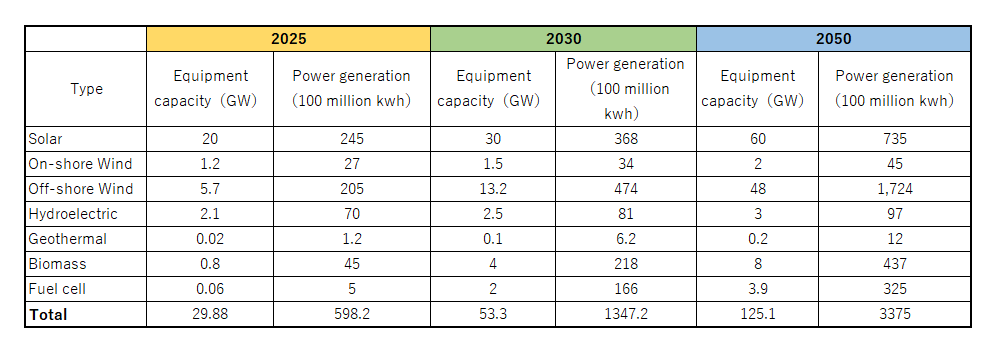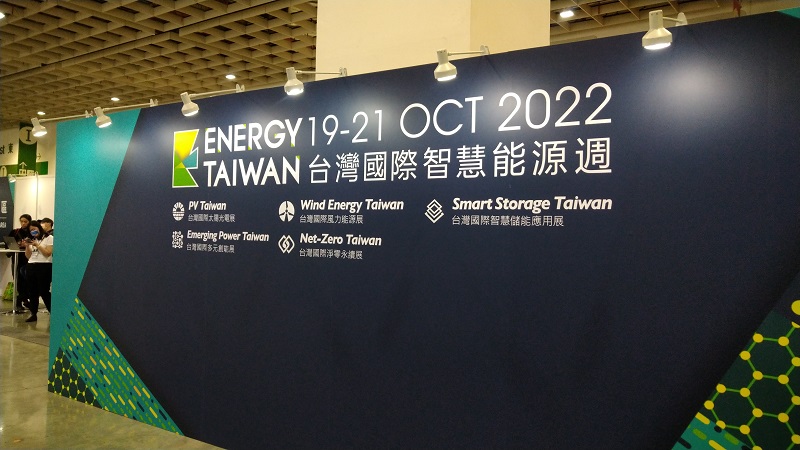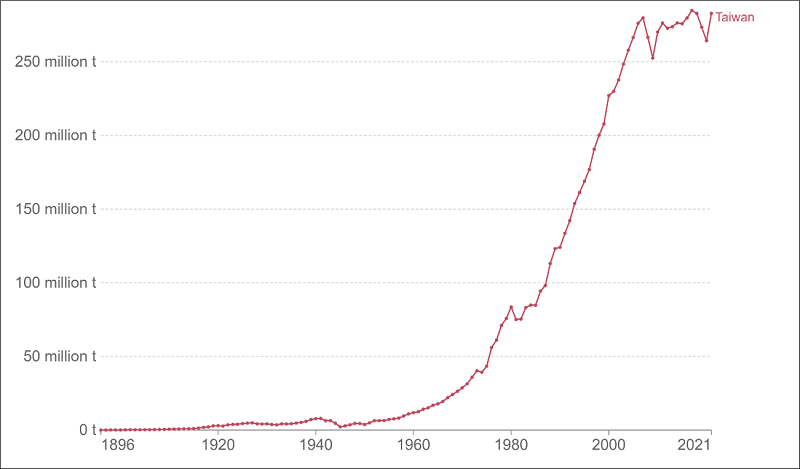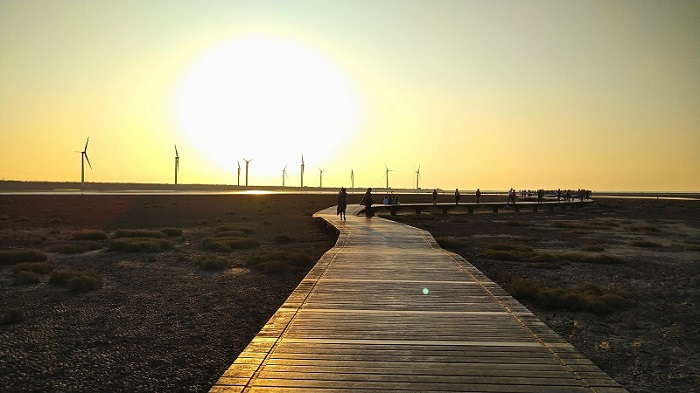IDE Research Columns
Column
Why Has Taiwan, a Nonparty to the Paris Agreement, Been Proactively Addressing Climate Change?
Fang-ting CHENG
Institute of Developing Economies, JETRO
January 2023
Taiwan is not an official member of the United Nations but has been actively addressing climate change along with the United Nation Framework Convention on Climate Change (UNFCCC). It announced its official target in 2015, following the Paris Agreement, and submitted it to the secretariat of the UNFCCC. In March 2022, it further released its Net-Zero Emissions Roadmap and Strategy. Thus, the question emerges: why is Taiwan eager to address these issues? This article outlines three possible motivations, namely, climate impact, international participation, and economic development.
Taiwan’s Commitment to Climate Change
To address climate change, Taiwan passed the Greenhouse Gases Emission Reduction and Management Act in July 2015 in which the reduction target was set to 50% based on the 2005 level and was expected to be achieved by 2050. The current administration set a mid-term policy target in 2016 for the development of renewable energy in an effort to reduce coal-fired power generation capacity from 35.5% to 30% by 2025. In addition, it aimed to reduce nuclear power generation capacity from 10.4% to 0%. Finally, it planned to supplement the power supply reduction of nuclear by increasing the capacities for natural gas and renewable energy power generation from 31.6% to 50% and from 9.5% to 20%, respectively (Table 1).
Table 1. Estimated Renewable Energy Equipment Capacity and Power Generation

Note: Adapted from The Net-Zero Emissions Roadmap and Strategy,
released in March 2022 (https://www.ndc.gov.tw/Default.aspx).
Conversely, scholars have argued that carbon neutrality is necessary for achieving the goal of the Paris Agreement in the global scientific society. It denotes an effort to maintain a constant concentration of carbon dioxide (CO2) in the atmosphere by striking a balance between CO2 emission and absorption (or removal through, for example, carbon capture, utilization, and storage [CCUS]). As the current target of reduction at 50%, which is based on the 2005 level, is inadequate for achieving carbon neutrality, Taiwan announced a new target in 2021 and released the roadmap in 2022.
The roadmap has three foci of commitment. The first is the electricity composition target for 2050, which includes 60%–70% of renewable energy (Table 1), 9%–12% of hydrogen power, and 20%–27% of coal-fired power through CCUS. The second is the decarbonization of transportation sector and energy-saving buildings. The last one denotes the revision of the legal system and the collection of carbon fees.
Subsequently, what are the motivations of Taiwan for addressing climate change, including the active promotion of renewable energy?
Domestic Needs for Coping with Damages due to Climate Change
Similar to many other places and regions in the world, Taiwan also faces serious natural impacts due to extreme weather events, such as torrential rain, flood, drought, high temperature, and sea level rise, among others. Damages due to aggravated climate change are increasing public awareness, which considers that immediate measures for adaptation1 are crucial, such as early warning, disaster management, and water resource security, among others.
With reference to the measures for climate adaptation adopted in foreign countries, Taiwan has developed several policy measures and law amendments in recent years such as the Outline of the Climate Change Adaptation Policy in 2012, the Adaptation Action Plan in 2014, and the Coastal Management Act in 2015. Moreover, the government has approved the Code of Action for Adaptation to Climate Change and launched the 2018–2022 Adaptation Action Plan in 2017. Conversely, legislative preparation includes the National Land Planning Act in 2016 and the amendment of the Water Conservancy Act in 2018.
Interest to Broaden International Participation in Global Issues
Taiwan’s commitment to climate change is also driven by the interest to broaden its international participation. In Taiwan, similar to the other countries, the government and stakeholders from business sectors and social communities are exerting effort to engage themselves in global discussions and to organize many platforms for conveying domestic and foreign practice and experiences. In addition, public and private sectors are sending delegates and observers to participate in international negotiations, such as the annual Conference of Parties of the UNFCCC. Taiwan sees that increasing its presence as an active actor in the international commitment for climate change is important.
Boost for Economic Development and Response to Impacts of Carbon Border Adjustment Mechanism
Taiwan’s motivation to address climate change also stems from economic reason. The domestic industries and business sectors consider the policy to engage in the development of renewable energy as a crucial factor for boosting the economy. The public investment required to fulfill the Net-Zero Emission Roadmap is estimated to reach NT$900 billion (approximately US$32 billion) by 2030. In addition, to promote the development of domestic supply chains in renewable energy, the government organizes international exhibitions and seminars, which have attracted an increasing number of major domestic and foreign suppliers, on an annual basis (Photo 1).

Photo 1. International Exhibition Fair, The Energy Taiwan Expo,
organized in Taipei to promote renewable energy businesses.
Photo taken by the author in October 2022.
As an industrialized economy, Taiwan’s increasing emissions have also inevitably contributed to the worsening climate change. As per the data from the Global Carbon Project, Taiwan’s emissions have increased rapidly since 1980 and have ranked globally between the 20th and 30th since 2020, which constitute ~1% of the total global emissions (Figure 1). Thus, Taiwan bears its part of the responsibility for global climate change as well as other industrialized countries.

Figure 1. Annual CO2 Emission of Taiwan from Fossil Fuels and Industries.
(Land use change is excluded)
Source: Ritchie, Hannah, Max Roser and Pablo Rosado (2020)
https://ourworldindata.org/co2-and-other-greenhouse-gas-emissions
(Accessed January 10, 2023).
Taiwan’s net-zero emissions roadmap refers to many foreign practices and experiences for coping with the decarbonization trend. Europe is frequently cited as an example, as Taiwan has a similarly open economy, whose development is profoundly dependent on foreign trade. A forthcoming regulatory measure called the Carbon Border Adjustment Mechanism (CBAM), which was released by the European Commission in July 2021, has attracted the attention of the industries and trade sectors in Taiwan.
Particularly, Taiwan is not only one of the world’s top 20 trading countries but is also an important part of the international science and technology industry. Consequently, the need emerges to respond to the increasing external pressure from international demands for emission reduction.
CBAM, which is also known as the carbon border adjustment tax,2 is a measure that imposes a carbon price on the amount of carbon emitted during the production process, which is equivalent to a form of tariff or other taxes in the European Union (EU). This mechanism aims to prevent carbon leakage3 when businesses in the EU import relevant products from outside the EU. CBAM will initiate a reporting system in 2023 at the preliminary stage. Afterward, payment will be mandatory through a full-scale introduction in 2026.
As Taiwan’s industry is deeply involved in the global supply chain, it is not extraneous to new regulations introduced in Europe. Many Taiwanese companies are seriously concerned about the cost increase due to the introduction of carbon fees under the new climate law given that the ability to reduce emissions varies greatly across companies. Another concern stems from the lack of renewable energy for many reasons such as the lack of open space for mega solar power, delay in the development of offshore wind power, and difficulty in the development of hydrogen and CCUS technology.
Policy-Learning
Notably, Taiwan’s learning behaviors have facilitated its motivation to address the issue; that is, learning from the pros and cons of policies and practices in foreign countries. For example, Taiwanese officials, industries, professionals, and civilians have been engaging in informed communication and practical interaction at various international platforms, including governmental and nongovernmental ones, to enhance knowledge and experience in addressing climate change and transition to renewable energy.
Learning to engage in global issues in the international arena, such as UN and other international organizations, is particularly essential for Taiwan, because opportunities for international participation are limited. At the same time, this limitation enhances the willingness to eagerly learn from policies and practices in other countries, which well explains its behavior in addressing the challenges climate change and energy reform in recent years.
Author’s Note
This column is based on the following works.
Cheng, Fang-Ting. 2021. “International Norms, Policy Transfers and Energy Transition: Implications for Taiwan’s Development.” Issues & Studies 57(4).
https://www.worldscientific.com/doi/10.1142/S1013251121500144
Cheng, Fang-Ting. 2022. “Taiwan Addresses Climate Change Policy Learning, Formulation and Implementation.” East Asian Policy 14(2): 38-55.
https://www.worldscientific.com/doi/10.1142/S1793930522000113
Cheng, Fang-Ting. 2022. “Taiwan’s Step Toward the Goal of a “Nuclear-Free Homeland” – The Referendum Result of December 18, 2021.” Energy Transition in East Asia- Tracking the Transformation. ISEP & CNEAS. February 28, 2022.
https://cneas-energytransition.asia/256/
Notes
- In contrary to climate mitigation, climate adaptation is “the process of adjusting to avoid the expected or actual consequences of climate change. Adaptation actions aim to reduce the vulnerability of natural and human systems to climate change and can include actions to reduce exposure and sensitivity to climate effects and increase adaptive capacity.” US Department of Agriculture, https://www.usda.gov/oce/energy-and-environment/climate/adaptation (Accessed December 16, 2022.)
- As a trade-related measure, CBAM affects production and exports. World Economic Forum. https://www.weforum.org/agenda/2021/10/what-is-a-carbon-border-tax-what-does-it-mean-for-trade/ (Accessed December 16, 2022.)
- Carbon leakage occurs when the degree of regulation of greenhouse gas emissions differs across countries and when a difference exists in the international competitiveness of industries between countries with strict regulations and others with less stringent regulations. As a result, production and investment in countries with strict regulations will shrink, which could result in a decrease in emissions, while production and investment in countries with less stringent regulations will expand, which could result in an increase in emissions.
Reference
Ritchie, Hannah, Max Roser, and Pablo Rosado. 2020. “CO2 and Greenhouse Gas Emissions.” [Online Resource] Our World In Data. https://ourworldindata.org/co2-and-other-greenhouse-gas-emissions
About the Author

Dr. Cheng received her PhD and MA in political science from the University of Tokyo, and her BA from The National Taiwan University. Her special fields of study are international relations, international politics, environmental studies, global governance, and negotiations on climate change. She has published two single-authored books on climate change negotiations, namely, The Climate Change Negotiation and Japan: Japanese Diplomacy and Measures beyond the Kyoto Negotiation (May 2013, in Japanese) and The Formation of Complementary Relationships among Overlapping Regimes: Negotiations on Climate Change, US–China Relations, and the Paris Agreement (March 2017, in Japanese).
*Thumbnail image: On-shore wind power plant in Taichung, Taiwan. Photo by the author in March 2021.
**The views expressed in the columns are those of the author(s) and do not represent the views of IDE or the institutions to which the authors are attached.


